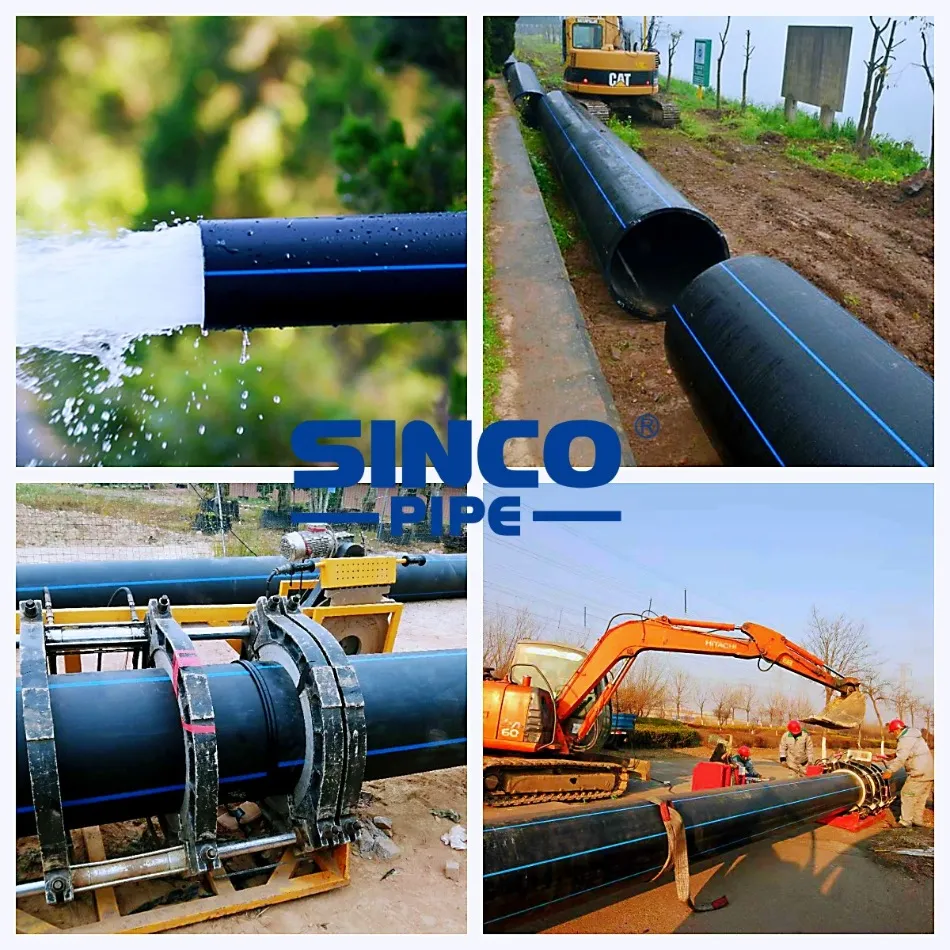Your Position: Home - Plastic Tubes - 10-Year Lifespan HDPE Pipes – Why Do They Fail by Year 7?
High-Density polyethylene (HDPE) pipes are renowned for their durability, flexibility, and resistance to corrosion, making them a popular choice for a wide range of applications, from water supply to gas distribution. With a typical lifespan of 50 years or more under ideal conditions, HDPE pipes are often marketed as a long-term solution. However, some projects experience unexpected failures as early as year 7, leaving engineers and contractors scratching their heads.
If you’re wondering why your HDPE pipes aren’t living up to their promised lifespan, this article will explore the most common reasons for premature failure and provide actionable insights to help you avoid these pitfalls.
One of the leading causes of early HDPE pipe failure is improper installation. While HDPE pipes are relatively easy to work with, they require specific techniques to ensure long-term performance. Common installation mistakes include:
Incorrect Fusion Joints: Improperly fused joints can lead to leaks or weak points in the pipeline. Butt fusion and electrofusion require precise temperature control, pressure, and alignment to create a seamless bond.
Inadequate Bedding and Backfilling: HDPE pipes need proper support to prevent deformation or stress. Poor bedding or uneven backfilling can cause the pipe to bend, crack, or collapse over time.
Excessive Stress During Installation: Pulling or bending the pipe beyond its recommended limits during installation can cause micro-cracks or weaken its structural integrity.
Train installation teams on proper fusion techniques and follow manufacturer guidelines.
Use appropriate bedding materials and ensure even backfilling.
Avoid overstressing the pipe during installation.
HDPE pipes are susceptible to degradation when exposed to ultraviolet (UV) radiation for extended periods. While most HDPE pipes are designed with UV stabilizers, prolonged exposure to sunlight can still cause the material to become brittle and prone to cracking.
Use HDPE pipes with enhanced UV protection for above-ground installations.
Shield pipes from direct sunlight using protective coatings or enclosures.
Consider burying pipes underground whenever possible.

Although HDPE pipes are highly resistant to many chemicals, they can still degrade when exposed to incompatible substances. For example, certain solvents, oils, or acids can weaken the pipe material over time, leading to cracks or leaks.
Verify the chemical compatibility of HDPE pipes with the substances they will carry.
Consult the manufacturer’s chemical resistance chart before selecting pipes for specific applications.
Regularly inspect pipes for signs of chemical damage, such as discoloration or softening.
HDPE pipes are designed to handle specific pressure ratings, but exceeding these limits can lead to premature failure. Pressure surges, also known as water hammer effects, can cause sudden stress on the pipe walls, leading to cracks or bursts.
Ensure the selected pipe has a pressure rating suitable for the application.
Install pressure relief valves or surge suppressors to mitigate water hammer effects.
Regularly monitor system pressure and address any anomalies promptly.
External environmental conditions can also contribute to early HDPE pipe failure. For example:
Soil Movement: Shifting soil or ground settlement can exert stress on the pipe, causing it to deform or crack.
Temperature Extremes: While HDPE pipes can handle a wide temperature range, extreme fluctuations can cause expansion and contraction, leading to stress fractures.
Abrasive Surroundings: Pipes installed in abrasive soils or rocky terrain may experience wear and tear over time.
Conduct a thorough site assessment before installation to identify potential environmental risks.
Use protective sleeves or coatings for pipes installed in abrasive or unstable environments.
Design the pipeline system to accommodate thermal expansion and contraction.
Although rare, manufacturing defects can also lead to premature pipe failure. Issues such as inconsistent wall thickness, poor material quality, or inadequate UV stabilizers can compromise the pipe’s performance.
Source HDPE pipes from reputable manufacturers with a proven track record.
Inspect pipes upon delivery for any visible defects or irregularities.
Request certification or test reports to ensure compliance with industry standards.
Even the most durable pipes require regular maintenance and monitoring to ensure optimal performance. Ignoring signs of wear and tear, such as small leaks or surface cracks, can lead to larger issues over time.
Implement a routine inspection schedule to identify and address potential problems early.
Use advanced monitoring tools, such as leak detection systems, to track pipeline performance.
Train staff to recognize and report signs of pipe degradation.
While HDPE pipelines are designed to last for decades, their performance depends on proper installation, environmental conditions, and ongoing maintenance. By understanding the common causes of premature failure and taking proactive steps to address them, you can ensure that your HDPE pipeline system delivers reliable performance for years to come.
If your pipes are failing by year 7, it’s time to reassess your approach. From improving installation practices to monitoring environmental factors, small changes can make a big difference. Remember, the key to maximizing the lifespan of your HDPE pipes lies in prevention, not just repair.
By investing in quality materials, skilled installation, and regular maintenance, you can avoid costly failures and enjoy the full benefits of this versatile and durable piping solution. Don’t let preventable issues cut your project short – take action today to protect your pipeline for the long haul!
8
0
0
Previous: None
Next: none
Comments
All Comments (0)